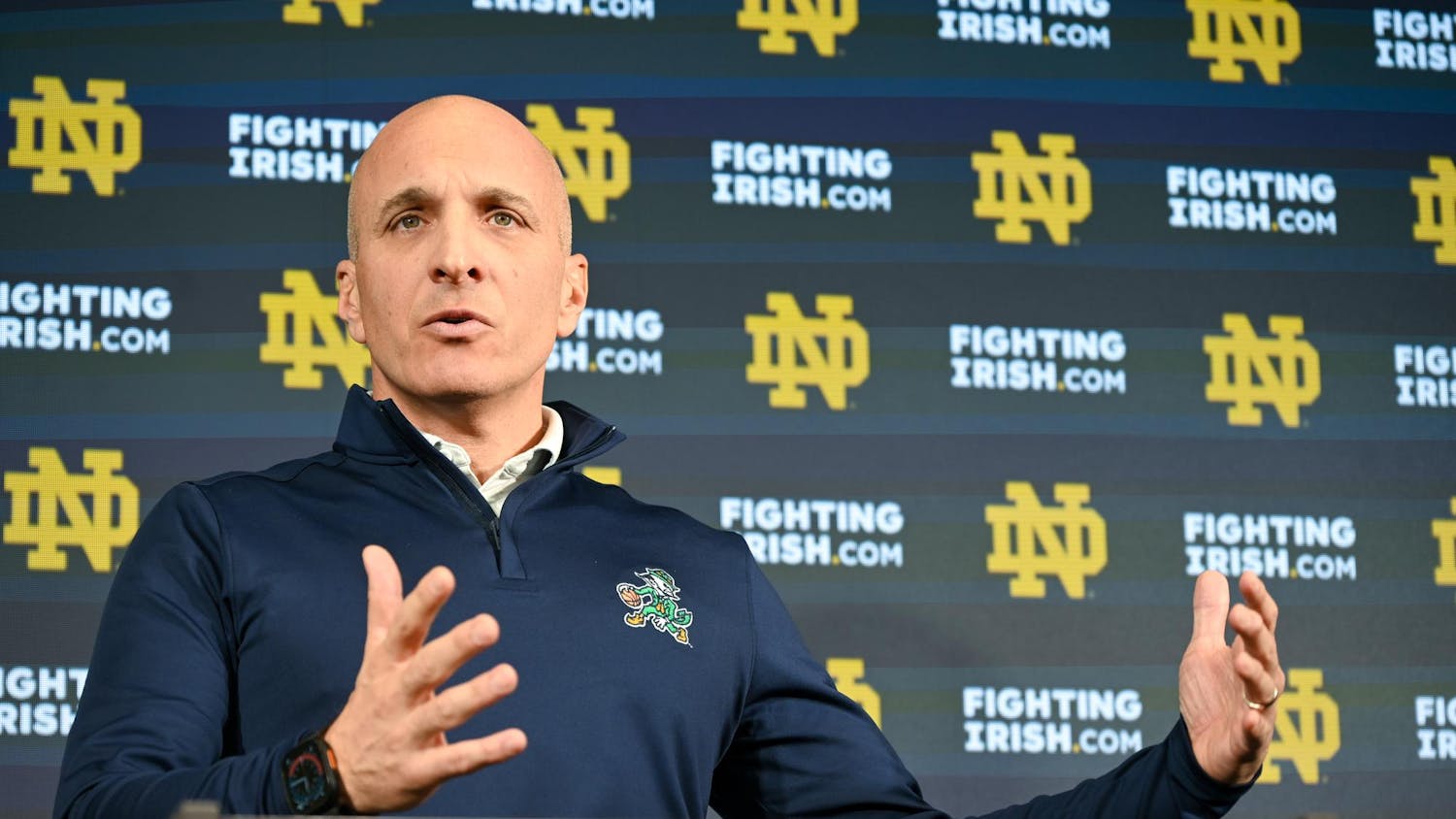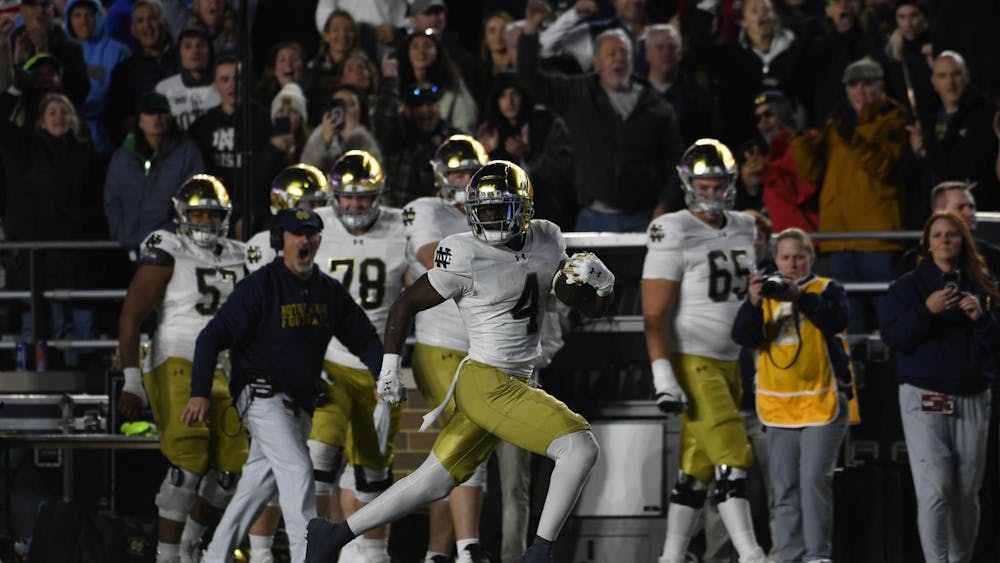Notre Dame women’s basketball team has had a remarkably volatile season. The Irish endured a pounding from South Carolina and battled — but couldn’t finish — in both games against Syracuse. At the same time, Notre Dame now has two impressive upset road wins against Tennessee and most recently, UConn. A 15-point underdog on Saturday night, the Irish turned the figure around, winning by that many.
While sloppy at times, the Irish generally play and shoot well. Obviously, the team has a weakness handling post players on defense, but superior play from Sonia Citron and Hannah Hidalgo has kept the team steady thus far. At times, such as Saturday night, other players like Maddy Westbeld took the spotlight. Against UConn, Westbeld played the entire game, finishing with 23 points off of 60% shooting from the field.
Yet, the Irish are limited in their depth, and with key guard Olivia Miles now confirmed to be out for the duration of the season, the Irish need to look elsewhere to ensure that, in big games, Hidalgo and Citron can be supplemented in the backcourt. Emma Risch, a five-star recruit who saw limited action in the first few months of the season, is also out for the season due to a hip injury.
The Irish need key transfer guard Anna DeWolfe to step up to the plate. DeWolfe needs to take key minutes, but if used properly, she is a major weapon — not just a role player. During her time at Fordham, she won three straight First Team All Conference (A-10) awards, and last year, she was second in the conference in scoring. This year, she is averaging 9.1 points per game on 46.5% field goal shooting, the highest in her career. At first glance, DeWolfe’s stats don’t look overly surprising. She’s playing a little bit less (30.8 minutes now vs. 37-38 minutes at Fordham), and she’s scoring a little bit less; she roughly averaged 18 points per game the last few years. Of course, the ACC competition is more difficult, and the Irish are scoring well — even when they lose.
DeWolfe’s scoring (or lack thereof) isn’t the problem. Her synergy, spacing and defense is. Currently, DeWolfe tends to start and play in a wing/guard type position alongside both Hidalgo and Citron. DeWolfe often comes out of the game first in order to bring in a post player. In my opinion, this doesn’t bring out the best of DeWolfe, a natural “drive and score” guard who is best with space and the ability to dribble. DeWolfe is neither a three point specialist or a player who will be known for her motions, screens or cuts. Unfortunately, playing her alongside Hidalgo and Citron forces her into that exact role. Often, head coach Niele Ivey starts her in the corner, outside of the three point line, letting her have space when other defenders help cover the lane. Unfortunately, the Irish’s offense rarely swings the ball around the horn for DeWolfe to be an asset in situations when she’s open. Positioning (and more so stalling) DeWolfe in the corner would be a great idea if she was a three-point specialist. She’s not. She’s adequate from there, shooting 34.9% on the year. But it’s not a preferred look for her, and if zone (or heavy help-side) defense can force that shot, it’s a win for the opposing team.
Defensively, against UConn, DeWolfe finished with a plus/minus of -12. Last week’s home game against Syracuse was no better: -16. Generally not an overly physical player (or one who picks up personal fouls, a good thing), DeWolfe often finds herself mismatched against larger players. Her natural role on defense is to guard the primary ball handler near the key. Ivey tends to prefer to have Hidalgo guard this player, which makes sense, given her ability to draw a steal. However, Hidalgo’s play also generates silly fouls and can blow a coverage. In last week’s game against Syracuse, Hidalgo twice missed a fastbreak/turnover layup. In addition, Hidalgo’s play is risky from an injury-prevention standpoint; as the new face of Notre Dame women’s basketball, is the prospect of a steal really worth a potential twisted ankle or (accidental) elbow to the face? DeWolfe provides more stability during fastbreaks and has had years of success guarding shorter guards. Obviously, there’s no perfect combination or easy fix, but when the Irish play man defense, I’d like to see Ivey experiment with some different setups.
As the Irish get closer to ACC Tournament play, the team will have to play more games in a shorter timespan. Playing Hidalgo, Citron and Westbeld the entirety of the game might work in the regular season, but in order to get their best production — especially against fast-paced teams — Ivey will need to reduce their minutes. DeWolfe is a serious asset in these situations, and she has the ability to act as a true/traditional point guard and lead the second unit, similar to what Lou Williams did for many years on the Hawks. The Irish don’t have a lot of weapons right now with several scholarship players out for the year. So far, they’ve been a consistent team, and Ivey’s setup hasn’t been overly surprising. That could change, depending on what she decides to do with Anna DeWolfe going forward. I’d advocate for as much experimentation as possible.









